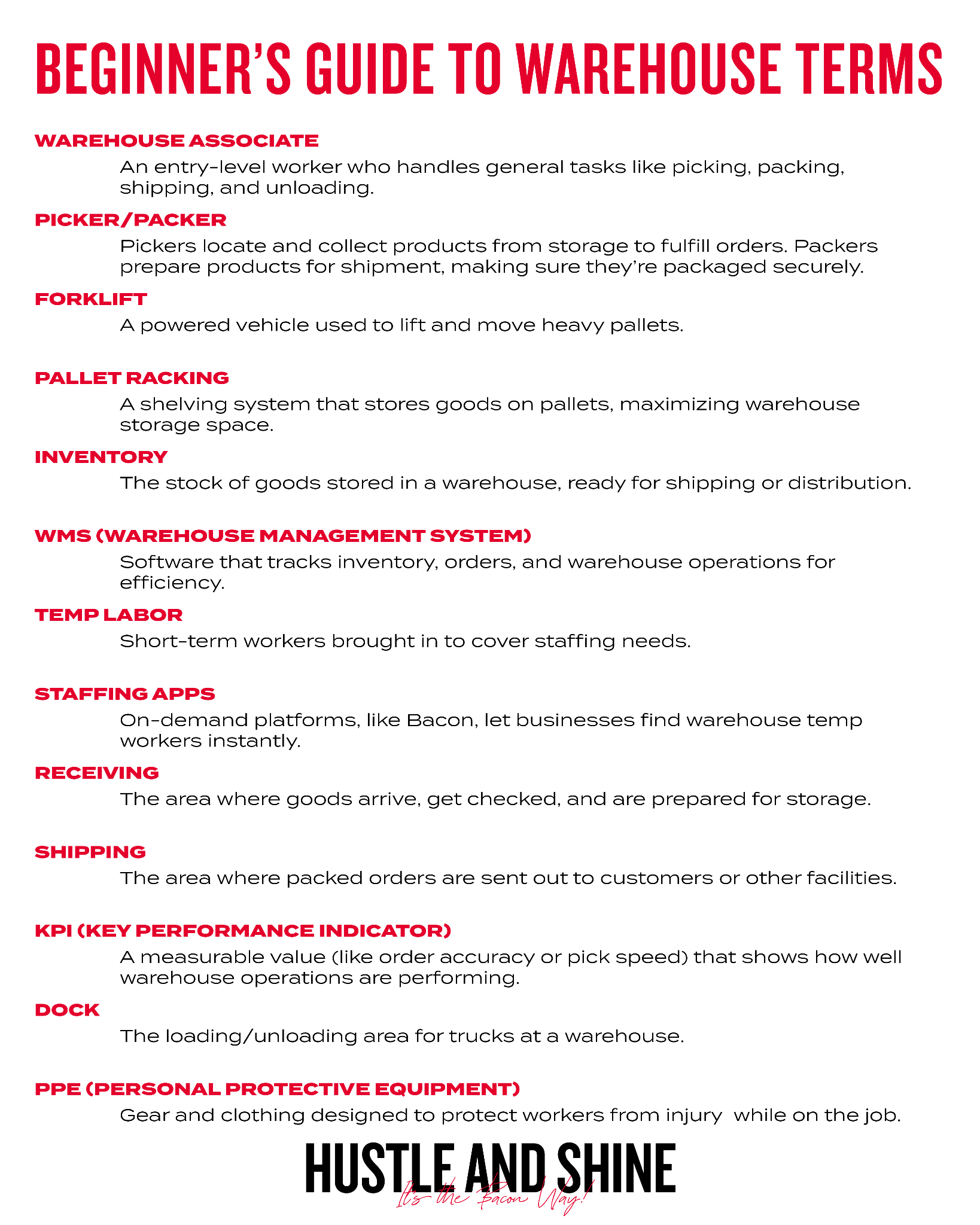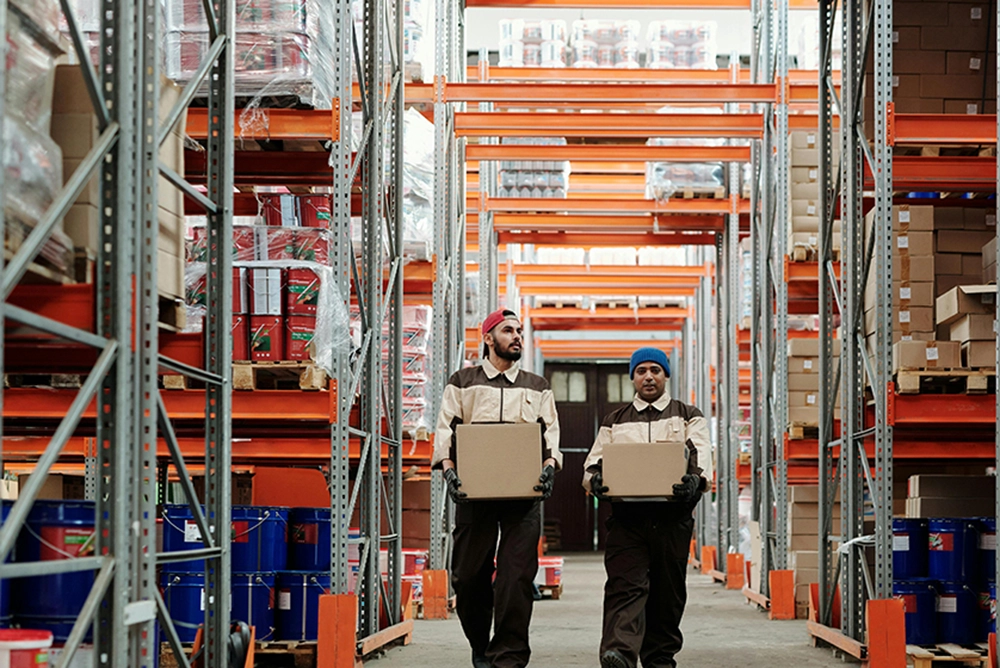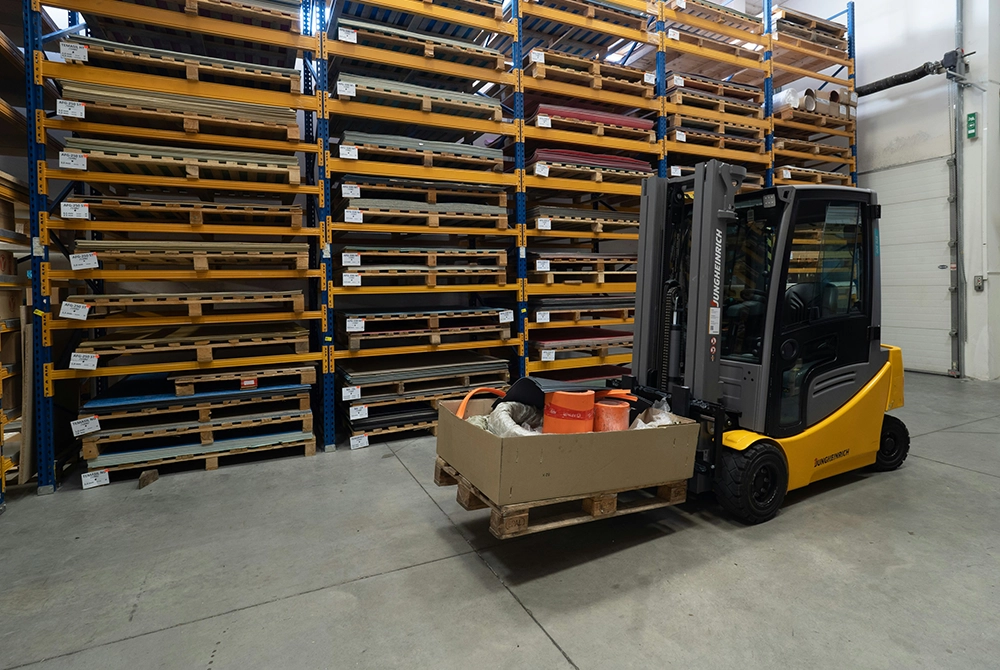Warehousing is the process of storing goods in a dedicated facility until they’re needed for distribution, sale, or further manufacturing. A warehouse is more than just a big storage closet, it is a building designed to keep products organized, protected, and accessible.
Understanding warehousing and how it works can be intimidating for new warehouse workers, first-time managers, and those curious about how warehouses operate.
This blog will cover warehouse roles, equipment, workflows, safety, and staffing. Including a glossary of need-to-know warehouse terms.

What Is a Warehouse?
A warehouse is a facility designed for storing goods until they’re shipped, distributed, or ready for further manufacturing.
There are a few different types of warehouses that differ mainly by what each warehouse specializes in.
There are distribution centers that store goods temporarily and then distribute them to wholesalers, retail stores, or other locations.
There are fulfillment centers that are usually third parties that store products and directly ship them to individual customers, primarily for e-commerce businesses.
Cold storage warehouses store items that need to be refrigerated or frozen.
Manufacturing warehouses store raw materials, components or finished goods for manufacturing operations.
No matter the type, warehouses play a large role in keeping inventory available, reducing delivery times, and organizing the supply chain. The fast shipping we expect now would not be possible without warehouses.
Key Roles and Responsibilities in a Warehouse
There are 5 key roles in warehousing. Though the number of roles will vary from warehouse to warehouse. These are Warehouse associates, forklift operators, pickers and packers, supervisors and managers, and temp labor.
Warehouse associates are performing general labor tasks. These tasks could include receiving, checking shipments against invoices, loading and unloading goods, inventory management, and general upkeep of the warehouse.
Forklift Operators are certified and licensed to operate forklift trucks. They use forklifts to move heavy pallets and load/unload trucks.
Pickers and Packers are responsible for locating items (pickers) and preparing them for shipment (packers). This often involves counting or scanning items to insure order accuracy.
Supervisors and managers are the leaders of a warehouse. They oversee operations, schedules, safety, and workflow efficiency.
Temporary warehouse workers are workers who are contracted to work at a warehouse for a temporary amount of time. Temp workers are not employed by the warehouse, they are either hired by a temp agency near you or are an independent contractor through a warehouse job app. Warehouse temp staffing helps fill staffing gaps during busy seasons or used consistently to have a flexible workforce.
Basic Warehouse Layout and Workflow
A basic warehouse layout includes a receiving area, storage area, picking area, packing area, and shipping area.
The receiving area is where incoming goods are unloaded and checked. This often includes spaces for trucks to dock and be unloaded.
The storage area is the main area of the warehouse with pallet racking, shelving, and bin systems.
The picking area is where products are pulled to fulfill orders. The type of picking area will depend on the specialty of the warehouse and the type of warehouse shelving system used.
Packing and shipping areas are where goods are prepared for transport. This area will also vary depending on the specification of the warehouse. Some warehouses may only transport large pallets of goods, while others may be packing individual orders that vary in size.
The workflow of a warehouse can also vary slightly but most warehouses utilize a Warehouse Management System or WMS. A WMS is a software that allows warehouse workers to take invoices of goods as they are received, know where to store the goods, where to find the goods when they are being pulled for packing, and to track which goods are being shipped and when.
Safety Basics Every Beginner Should Know
Safety is vital in warehouse operations. There are training and certifications that can benefit warehouse beginners.
Understanding Personal protective equipment (PPE) is also important. PPE are gear and clothing designated to protect workers from injury while on the job. This includes steel-toed boots, safety gloves, safety glasses, hearing protection, safety vest, and hard hats. The kind of PPE used will vary depending on the warehouse specialty.
Oftentimes warehouse work will require physical labor of some sort. Using correct lifting techniques, clearing walkways, and reporting hazards can help reduce the chances of injury. Take notice of emergency plans as well, fire exits, spill response and first aid stations.
Staffing Your Warehouse: Temp Labor and Staffing Apps
Temp labor is often used during seasonal peaks, unexpected absences, special projects, or just to supplement full time staff.
There are two options for finding warehouse staff, the first is temp agencies near you and the second is on-demand staffing apps.
Traditional temp agencies are the traditional method for sourcing workers. With a temp agency a warehouse will sign a contract that outlines how many workers, when the workers will work, and what the workers will be paid. The temp agency then sends workers to the warehouse to work for the specified time.
The problem with temp agency workers is that they often are unreliable and don’t show up for work. Because there is a signed contract warehouses can’t flex their temp workers numbers up or down to meet demand.
Staffing apps have on-demand hiring for staffing needs. Warehouses can find warehouse workers quickly by posting shifts on the apps. Workers pick up warehouse shifts that interest them. Warehouses have full control over all the aspects of their shifts.
Because of the increased control it is easier to staff warehouse shifts and find pickers and packers for any warehouse.
Conclusion
Warehousing is a fast-paced, critical industry with room for growth and learning. If you are new to warehousing keep safety, organization, and adaptability as priorities. Explore warehouse job apps to keep operations running smoothly.







